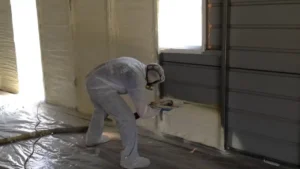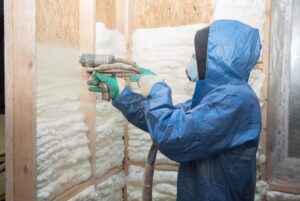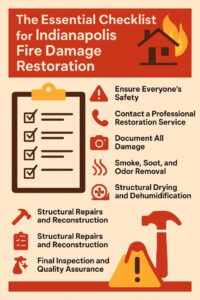Closed-cell spray foam insulation is often viewed as a top-tier option for homeowners who prioritize energy efficiency and overall home comfort. However, due to its higher upfront costs, homeowners in Garner may wonder whether it justifies the investment. In this article, we’ll break down all the important factors you need to consider—ranging from cost to benefits and long-term savings—to help you decide if closed-cell spray foam is the right choice for your home.
Closed-cell spray foam offers high R-values, durability, and moisture resistance, making it an attractive option for homeowners in Garner’s humid climate. However, these advantages come with a higher price tag compared to alternatives such as fiberglass batt or open-cell spray foam. The question is: Is the performance worth the extra cost?
By the end of this article, you’ll understand the ins and outs of closed-cell spray foam insulation, the costs involved, and the benefits and drawbacks. We’ll also provide you with a decision-making framework to help you determine whether this insulation option is worth the investment for your home.
Benefits of Closed-Cell Spray Foam Insulation
Closed-cell spray foam insulation provides several key advantages over other types of insulation materials, especially in regions like Garner, where humidity and temperature fluctuations are common. These benefits include superior thermal insulation, moisture resistance, and added structural strength.
Excellent Insulating Power
Closed-cell spray foam boasts an impressive R-value between 6 and 7 per inch of thickness, which is significantly higher than fiberglass or open-cell spray foam. This means that closed-cell foam provides superior heat resistance, making your home more energy-efficient. With better insulation, your heating and cooling systems won’t have to work as hard, leading to lower energy costs over time.
Moisture Resistance
One of the standout features of closed-cell spray foam is its resistance to moisture. It acts as a water barrier, preventing water infiltration from rain or high humidity. This is particularly beneficial in a climate like Garner’s, where moisture issues—such as mold and mildew—are common. By installing closed-cell foam, you can reduce the risk of water-related damage and improve the overall air quality inside your home.
Structural Reinforcement
Closed-cell spray foam also enhances the structural integrity of your home. The foam’s rigid texture adds strength to walls, ceilings, and even roofs. This is especially helpful for older homes or houses in regions prone to high winds and extreme weather conditions. The added support can improve your home’s resistance to environmental stresses, potentially saving you money on future repairs.
Energy Savings
By sealing air leaks and gaps, closed-cell spray foam helps maintain consistent temperatures inside your home. This reduces the need for constant heating and cooling, leading to significant energy savings. Homeowners typically see a reduction in energy bills by 30 to 50%, depending on the size and condition of the home.
Cost Breakdown: Is It Worth the Investment?
Closed-cell spray foam comes with a higher upfront cost compared to other insulation options. However, when considering the long-term savings on energy bills, potential repairs, and durability, many homeowners find the investment worthwhile. Below, we compare closed-cell spray foam with two common insulation alternatives—open-cell spray foam and fiberglass batt insulation.
Insulation Cost Comparison
| Insulation Type | Cost per Square Foot | R-value per Inch | Installation Complexity | Lifespan | Energy Savings Potential |
| Closed-Cell Spray Foam | $1.50 – $3.00 | 6 – 7 | Moderate to High | 50+ years | High |
| Open-Cell Spray Foam | $0.44 – $0.65 | 3.5 – 4 | Moderate | 30+ years | Moderate |
| Fiberglass Batt | $0.40 – $0.75 | 3.0 – 4.2 | Low | 20 – 30 years | Low |
Analysis:
- Cost per Square Foot: Closed-cell spray foam is the most expensive option, but it offers higher R-values and a longer lifespan than both fiberglass and open-cell spray foam.
- Energy Savings: Homeowners can expect significant reductions in heating and cooling costs. This energy efficiency is especially noticeable in homes with large attic spaces or older homes with existing gaps and air leaks.
- Lifespan: The longevity of closed-cell foam is a major selling point. While fiberglass and open-cell foam may require replacement in 20 to 30 years, closed-cell foam can last upwards of 50 years, making it a long-term investment.
Bonus Tip: When considering insulation for your home, look beyond initial costs and consider long-term savings on repairs, maintenance, and energy usage.
Things to Consider Before Making a Decision
Before investing in closed-cell spray foam insulation, homeowners should evaluate several factors to determine if it’s the best option for their specific needs and budget. Consider the following points:
Climate Considerations
Closed-cell spray foam performs especially well in regions with extreme weather fluctuations, such as Garner, where temperatures can vary widely between summer and winter. The foam’s air-tight seal and high R-value will help maintain a comfortable temperature inside your home, reducing the need for constant heating or cooling. If you live in a climate with high humidity, closed-cell foam’s moisture resistance is a significant advantage.
Home Age and Design
Older homes or homes with difficult-to-insulate spaces—such as attics, crawl spaces, or irregularly shaped walls—are prime candidates for closed-cell foam. The foam can be applied in a way that creates a seamless barrier, filling every gap and crevice. If your home has significant air leaks, closed-cell foam can effectively seal these openings, improving overall energy efficiency.
Budget and Cost-Effectiveness
While closed-cell spray foam offers excellent performance, its upfront cost can be a concern for some homeowners. It’s important to weigh the long-term savings on energy bills against the initial installation cost. If you have a smaller budget, you might consider alternatives such as open-cell spray foam or fiberglass, which still provide decent insulation but at a lower price.
Installation Requirements
Installing closed-cell spray foam requires professional expertise and specialized equipment. Homeowners should hire a certified contractor to ensure proper application. Improper installation can lead to inefficiencies or issues like off-gassing, so it’s important to work with a qualified installer.
Common Questions About Closed-Cell Spray Foam Insulation
1. How long does closed-cell spray foam last?
Closed-cell spray foam typically lasts over 50 years, making it a durable and long-term insulation option.
2. Is closed-cell spray foam safe for my home?
Yes, closed-cell spray foam is safe for residential use. Once the foam cures, it becomes inert and non-toxic. However, it’s important to hire a professional installer to ensure proper application and curing.
3. How much can I expect to save on my energy bills?
Energy savings vary, but homeowners can typically expect a reduction of 30-50% in their heating and cooling costs over time.
4. Does closed-cell spray foam require maintenance?
Once installed, closed-cell spray foam requires minimal maintenance. Unlike other insulation types, it doesn’t settle or lose its insulating properties over time.
5. Can closed-cell spray foam help with soundproofing?
Yes, while it is primarily used for thermal insulation, closed-cell spray foam also provides some soundproofing benefits, especially in areas like walls and ceilings.
Make the Right Decision
For Garner homeowners, closed-cell spray foam insulation services can be a valuable investment, particularly if you’re looking for long-term energy savings, moisture protection, and enhanced structural strength. While the initial cost is higher than alternatives like fiberglass batt or open-cell spray foam, the advantages in terms of performance and lifespan may make it the right choice for your home.
If your home has significant air leaks, moisture problems, or extreme temperature fluctuations, closed-cell spray foam can provide a high return on investment. However, it’s important to consider your budget, home design, and climate before making the decision.
Ultimately, closed-cell spray foam is worth the cost for many homeowners who prioritize durability, energy efficiency, and long-term savings. If you’re ready to take the next step, be sure to consult with a professional installer to evaluate your specific needs and ensure proper application.
FAQ
1. What is the main advantage of closed-cell spray foam over fiberglass insulation?
Closed-cell spray foam provides a higher R-value, superior moisture resistance, and added structural support, making it more effective than fiberglass in many cases.
2. Is closed-cell spray foam suitable for all parts of my home?
Closed-cell spray foam is especially useful in attics, crawl spaces, and walls, but it may not be necessary in areas with minimal insulation needs.
3. What makes closed-cell spray foam a more effective insulator?
The closed cells in the foam create an airtight seal, which significantly reduces heat transfer and air leaks, making it more effective than other types of insulation.
4. Does the installation of closed-cell spray foam require special equipment?
Yes, closed-cell spray foam requires professional-grade equipment and expertise for proper installation, ensuring it adheres to surfaces and expands to fill gaps effectively.
5. Are there any environmental concerns with closed-cell spray foam?
While closed-cell spray foam provides excellent insulation, its production can release greenhouse gases. However, more eco-friendly alternatives are available on the market today.











